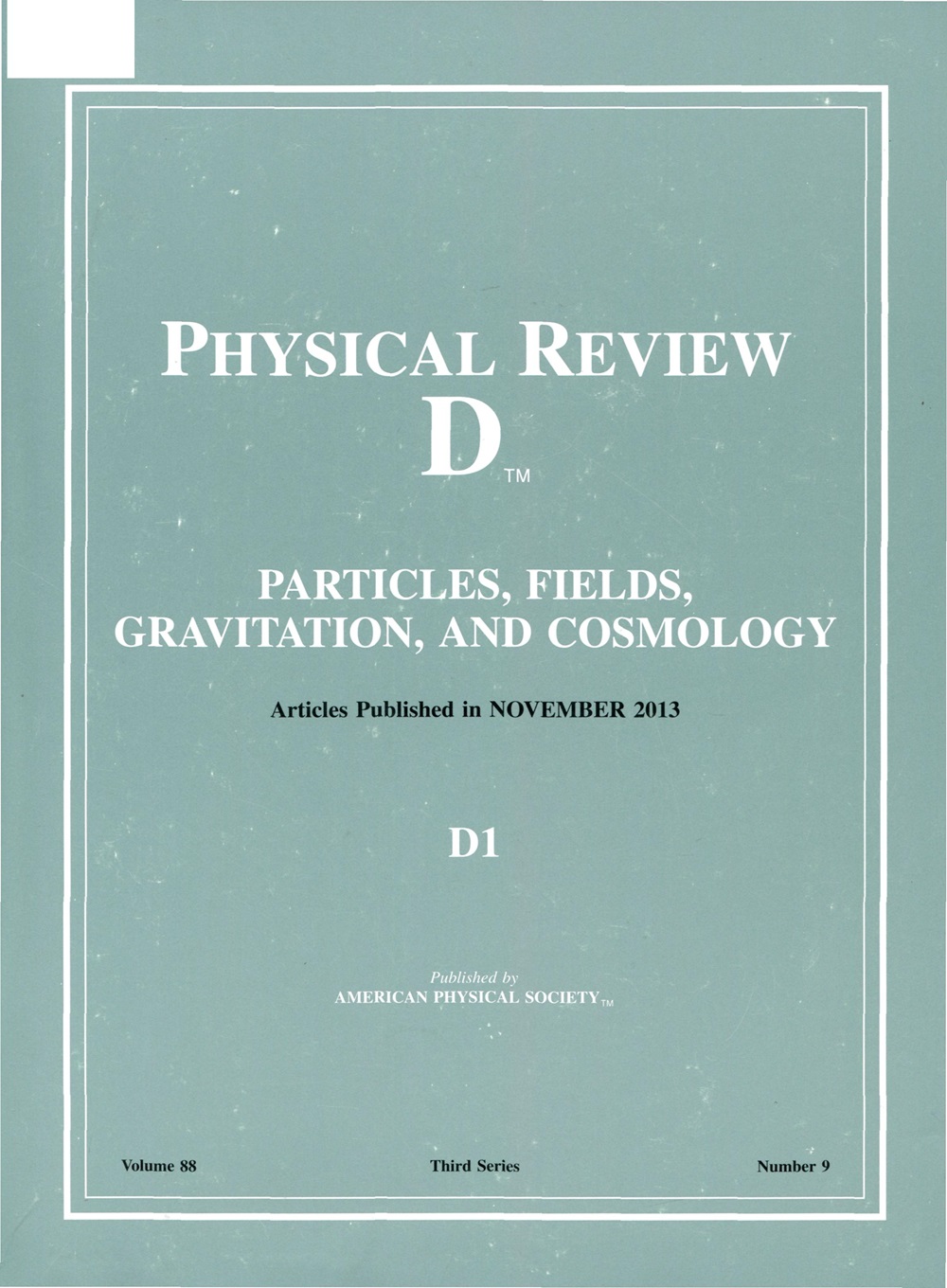由停止介子重建重中性轻子的质量
IF 5
2区 物理与天体物理
Q1 Physics and Astronomy
引用次数: 0
摘要
重中性轻子(hnl),取决于它们的质量和混合,可以在中短基线加速器中微子实验中从目标或吸收体的介子衰变中有效地产生,在中微子探测器内通过它们的衰变留下可探测的信号。我们证明了目前在费米实验室运行的ICARUS实验可以重建高强度粒子的质量,并在70-190 MeV的质量范围内探索新的高强度粒子参数空间。质量重建是由两个组成部分实现的:(i)在NuMI吸收器上由停止的k介子衰变产生HNL的简单二体运动学,随后HNL在探测器上衰变为带电-轻子对和中微子,以及(ii)高分辨率的液态氩时间投影室(LArTPC)探测器重建最终态粒子。我们的质量重建方法在真实能量分辨率和带电轻子的角度涂抹下具有鲁棒性,适用于任何LArTPC探测器。我们还讨论了ICARUS与DUNE附近探测器和PIP-II束流转储等未来设施在探测HNL参数空间中的协同作用。2025年由美国物理学会出版本文章由计算机程序翻译,如有差异,请以英文原文为准。
Mass reconstruction of heavy neutral leptons from stopped mesons
Heavy neutral leptons (HNLs), depending on their mass and mixing, can be efficiently produced in meson decays from the target or absorber in short- to medium-baseline accelerator neutrino experiments, leaving detectable signals through their decays inside the neutrino detectors. We show that the currently running ICARUS experiment at Fermilab can reconstruct the HNL mass and explore new HNL parameter space in the mass range of 70–190 MeV. The mass reconstruction is enabled by two ingredients: (i) simple two-body kinematics of HNL production from stopped kaon decays at the NuMI absorber, followed by HNL decay into a charged-lepton pair and neutrino at the detector, and (ii) high resolution of Liquid Argon Time Projection Chamber (LArTPC) detectors in reconstructing final state particles. Our mass reconstruction method is robust under realistic energy resolution and angular smearing of the charged leptons, and is applicable to any LArTPC detector. We also discuss the synergy between ICARUS and future facilities like DUNE near detector and PIP-II beam dump in probing the HNL parameter space. Published by the American Physical Society 2025
求助全文
通过发布文献求助,成功后即可免费获取论文全文。
去求助
来源期刊

Physical Review D
物理-天文与天体物理
CiteScore
9.20
自引率
36.00%
发文量
0
审稿时长
2 months
期刊介绍:
Physical Review D (PRD) is a leading journal in elementary particle physics, field theory, gravitation, and cosmology and is one of the top-cited journals in high-energy physics.
PRD covers experimental and theoretical results in all aspects of particle physics, field theory, gravitation and cosmology, including:
Particle physics experiments,
Electroweak interactions,
Strong interactions,
Lattice field theories, lattice QCD,
Beyond the standard model physics,
Phenomenological aspects of field theory, general methods,
Gravity, cosmology, cosmic rays,
Astrophysics and astroparticle physics,
General relativity,
Formal aspects of field theory, field theory in curved space,
String theory, quantum gravity, gauge/gravity duality.
 求助内容:
求助内容: 应助结果提醒方式:
应助结果提醒方式:


